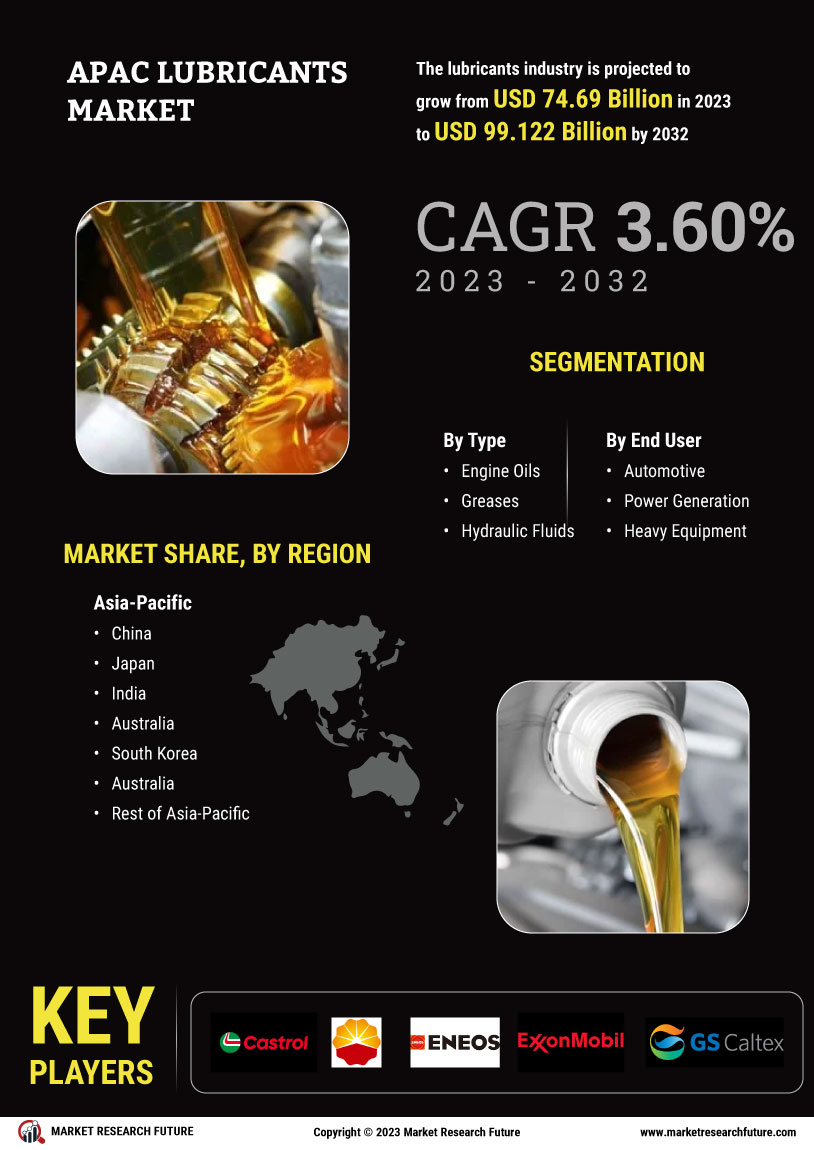China : Robust Growth and Demand Trends
China holds a commanding 10.5% market share in the APAC lubricants sector, driven by rapid industrialization and urbanization. Key growth drivers include the automotive sector's expansion, stringent environmental regulations promoting high-quality lubricants, and government initiatives supporting manufacturing. The demand for advanced lubricants is rising, particularly in electric vehicles and machinery, supported by significant investments in infrastructure and technology development.
India : Rapid Growth in Automotive Sector
India's lubricants market accounts for 5.8% of the APAC total, fueled by a booming automotive industry and increasing consumer awareness about vehicle maintenance. The government's push for 'Make in India' has led to enhanced manufacturing capabilities, while rising disposable incomes are driving demand for high-performance lubricants. Regulatory policies are also evolving to promote environmentally friendly products, further boosting market growth.
Japan : Focus on Quality and Sustainability
Japan's lubricants market holds a 4.2% share in APAC, characterized by a strong emphasis on technological innovation and sustainability. The demand for high-performance lubricants is driven by advanced automotive technologies and stringent environmental regulations. Government initiatives promoting energy efficiency and reduced emissions are also influencing consumption patterns, leading to a shift towards synthetic and bio-based lubricants.
South Korea : Strong Industrial Base and Demand
South Korea represents 2.8% of the APAC lubricants market, supported by a robust industrial base and a growing automotive sector. The demand for lubricants is driven by the need for high-quality products in manufacturing and transportation. Competitive dynamics are shaped by both local and international players, with significant investments in R&D to develop innovative solutions. Regulatory frameworks are increasingly focused on sustainability and environmental impact.
Malaysia : Growing Demand in Southeast Asia
Malaysia's lubricants market, accounting for 1.5% of APAC, is emerging as a strategic hub for the region. The growth is driven by increasing automotive sales and industrial activities, supported by government initiatives to enhance manufacturing capabilities. The demand for eco-friendly lubricants is rising, influenced by regulatory policies aimed at reducing environmental impact. Infrastructure development is also facilitating market expansion.
Thailand : Key Market for Automotive Lubricants
Thailand's lubricants market holds a 1.2% share in APAC, with diverse applications across automotive and industrial sectors. The growth is fueled by rising vehicle ownership and a focus on maintenance. Government policies promoting energy efficiency and sustainability are shaping market dynamics. The competitive landscape features both local and international players, with a strong emphasis on product innovation and quality.
Indonesia : Potential Growth Amidst Barriers
Indonesia's lubricants market, at 0.9% of APAC, is characterized by significant growth potential despite challenges such as regulatory hurdles and infrastructure limitations. The automotive sector is a key driver, with increasing vehicle sales and a growing middle class. Local players dominate the market, but international companies are expanding their presence. Government initiatives aimed at improving infrastructure are expected to enhance market conditions.
Rest of APAC : Diverse Dynamics Across Regions
The Rest of APAC lubricants market, accounting for 0.7%, is fragmented with varying dynamics across countries. Growth is driven by local demand in emerging markets and increasing industrial activities. Regulatory environments differ significantly, influencing product offerings and market strategies. Local players often dominate, but international companies are exploring opportunities in niche segments, particularly in eco-friendly lubricants.


















Leave a Comment